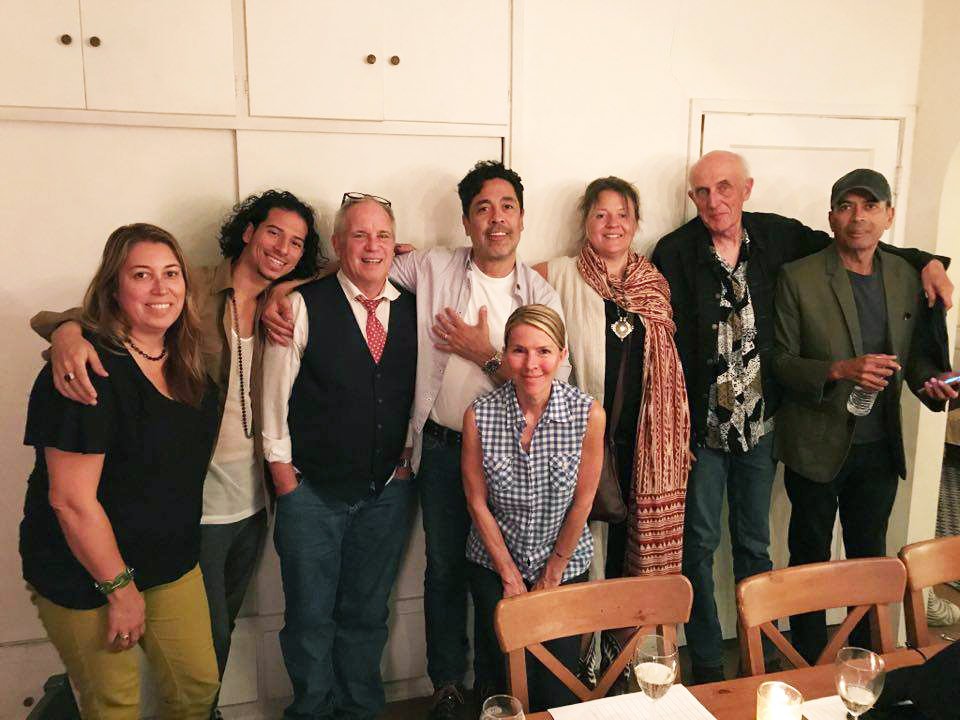
by Niki Smart
I‘m sure we can all agree that 2020 & 2021 have been difficult. What made it a little easier for me was stumbling upon Ana Lilia’s online breathwork class. During lockdown, Ana’s Saturday morning class became the highlight of my week. Sometimes, Ana starts her class 10 minutes early, with an uplifting, freestyle dance session, and the moment I see her lovely, smiling face appear on my screen, I feel better. And the music! Ana’s thoughtful playlist is somehow always spot on. In fact, I get so much out of her class, that I asked if I could interview her for SoCal Magazine so that our readers can benefit from Ana‘s healing, too. Here is Ana Lilia‘s insight into breathwork and I highly recommend you give her class a try—you won’t regret it.

1. Why did you start doing breathwork and how long have you been doing it?
I came across a breathwork class 6 years ago during a time in my life where I was depressed, my anxiety was at an all time high and I was feeling lost. I attended a breathwork class, not knowing what it was. During the class, we focused on active breathing for 30 minutes. My body responded in ways I didn’t expect. Not only did my hands cramp up — I started crying. It was so strange to me because I’d never had that kind of reaction before. But it was just the kind of release that I needed. In what felt like an instant of clarity, everything looked and felt different to me. The world felt brighter and lighter. I felt more alive than I’d felt in a long time. Most importantly, I was filled with a sense of empowerment that hasn’t left me since. From that moment on, I knew that breathwork was going to save my life. Shortly after, I decided that I wanted to learn how to facilitate a breathwork session and introduce it to as many people as possible who live with anxiety and depression. I want the world to know about how powerful, transformative and healing breathwork is.
2. What is breathwork?
Breathwork is an active form of meditation where you manipulate your breath to change the way you feel. There are many different types of breathing techniques. And yes, our body knows how to breathe naturally, but a lot of times we aren’t breathing properly. This can create an imbalance in the oxygen and carbon dioxide exchange. That imbalance can contribute to anxiety, panic attacks, and fatigue. Have you noticed that when you’re anxious, you tend to take shallow, rapid breaths from your chest, and you may even start to hyperventilate? This increases your heart rate and creates muscle tension. Your sympathetic nervous system becomes activated, and there is a surge of adrenaline and cortisol alerting your body that it needs to protect itself.
The breathing technique I use is a two stage pranayama breathing pattern. You take a first inhale from your diaphragm, a second from your chest and then you exhale. It’s a circular breathing technique, where as soon as you exhale, you inhale right away. This breathing practice can help you release tension from your body, clear your mind, and you can also have a deep healing session. Breathwork helps you feel more in control of your emotions and grounded as we navigate these stressful times.
One of my specialities is working with people who suffer from anxiety. Many of my clients would share with me that they have panic attacks often or they have been suffering from anxiety for a long time. I created a program with guided breathing meditations to help them manage their anxiety. The biggest thing I help them with is getting to the core of why they are stressed out. This awareness gives them the power to respond instead of reactivating whey they are getting triggered. They feel like they are in control of their life again. And have practical tools they can use when they are feeling stressed out.
3. Can anyone join your breathwork classes?
Yes! Everyone is welcomed in my breathwork classes. I created
Community Gathering right at the start of the pandemic as a way to support my community through the fear and anxiety we were all experiencing due to Covid-19. The isolation was very triggering to many people, and having a safe place where we could meet virtually became something they could look forward to and be reminded that they are not alone in how they feel. Several people have told me that Community Gathering literally saved their life during the pandemic. It’s a diverse community where people from all over the world join to breathe. We have teenagers who breathe with their parents, our oldest community member is in her 90s and we have everything else in between.
4. How much is it?
As a way to make it accessible to most people, Community Gathering is a sliding scale ticket starting at $10 – $35.
5. How does music play into your class?
Music is a HUGE part of my breathwork classes. My playlists are intended to take my clients on a journey. Every song that I pick tells a story with the lyrics that will resonate with my clients. The song may have them remember an experience or it might encourage an emotion to express more easily. I let my intuition create the playlist. I tap into the energy of my client or the group, and know instinctively if the song is right or wrong for the group or the person. And sometimes, we move so much energy before we go into the active breathing that I’m playing DJ on the spot to better support them while they are breathing. You can find hundreds of my breathwork playlists on my Spotify and Apple Music profiles.
6. What experiences have your clients shared with you that touched you the most?
My clients have had deep transformational healings. After a short amount of time working with me they unpack trauma, disappointments, anxiety and other stressors. They are left feeling refreshed, renewed and empowered. And by doing this deep healing work, it also helps them manifest and get aligned with their goals. My clients have manifested their dream homes, new jobs, launched business, attracted a partner…and this is because they are more confident, they know their worth and are open to receive.
7. What is the most common reaction people have when doing your class?
They can’t believe how different they feel after breathing. The tension their body was holding onto is gone. They gain clarity on why they were stressed. It helps them gain awareness about their thoughts and how it affects their anxiety and overwhelm. That awareness helps them feel back in control. and they know they can change the way they feel by connecting with their breath.
8. What do you have coming up next?
I’m hosting a Fall Retreat the first weekend of November in Los Angeles. I also started hosting monthly in-person events at the beach. To learn more about my offerings you can visit my website www.analilia.net. If you are interested in meditations to help you manage anxiety you can find my 7-day program at www.feelcalmtoday.com And I’m also on Instagram @_ana_lilia










